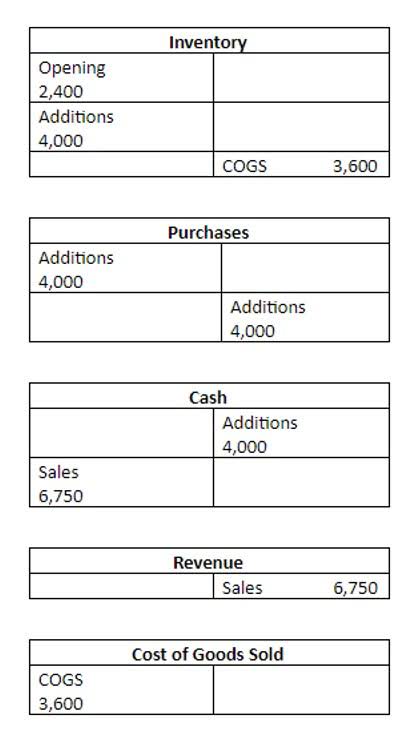
A reporting entity must assess whether the VIE model applies to its specific set of facts and circumstances. If the VIE model does not apply, the entity then defaults to the voting interest entity model. However, the rules for capitalization of costs are not always clear and, in these instances, it is especially important to exercise best judgement and diligently document the accounting conclusion. At the core of the GAAP rules are 10 main principles that aim to standardize, define, and regulate the reporting of an organization’s financial information. Answering commonly asked questions about the generally accepted accounting principles.
Account
- This can create a false sense of liquidity and potentially lead to inadvertent overdrafts if not carefully monitored.
- The first step in doing so is to contact the payee, to see if the check was lost.
- The State of Delaware’s unclaimed property reporting period is on a calendar year cycle (January 1st – December 31st).
- Accrued interest is the aggregated periodic interest on debt that has not yet been paid.
- Tracking issued checks and reflecting them in cash flow projections helps companies understand their actual liquidity.
- Our detailed brochure provides insights into how Remote Books Online can help you maintain accurate bookkeeping, stay tax-ready, and make informed financial decisions.
For a debt instrument like a bond, the periodic payments might include both principal and interest or interest only with the principal payment carried on the balance sheet until paid off at the debt maturity date. As repayment is generally a future event, debt is often measured at its present value. When debt is issued in exchange for non-monetary assets, other factors might be considered when determining initial measurement. Many debt balances on the financial statements represent the discounted future cash outflows to factor in the time value of money. From the perspective of cash flow management, outstanding checks are a liability.

3.1.3 Checks written but not released
If the check is not cleared until January, the company’s December cash balance will be overstated, and its liabilities understated, unless the outstanding check is properly accounted for in the financial statements. Tracking issued checks and reflecting them in cash flow projections helps companies understand their actual liquidity. Tools like cash flow statements and rolling forecasts improve accuracy in decision-making regarding short-term investments, debt management, and operational expenditures. Maintaining a financial buffer safeguards against liquidity shortages, ensuring businesses can meet outstanding checks unexpected expenses.

How to navigate accounting assumptions
Net cash payment or the carrying value of assets other than cash for the settlement of liability. This represents the gross amount of liability to be Interior Design Bookkeeping de-recognized from the balance sheet. Payment of liability within the certain duration specified in the contract may entitle the payer to a cash discount which is accounted for by reducing the payables balance and the recognition of discount received. Where payment is made through the transfer of any assets other than cash, it may be necessary to recognize gain or loss for the difference in carrying value of those assets and the amount of liability offset. The liability must be reduced to the extent of the payment by cash or the transfer of other assets.

Properly accounting for outstanding checks ensures transparency in financial statements. These checks, recorded as liabilities, must appear on the balance sheet under current liabilities to provide a clear picture of financial obligations. This transparency, mandated by GAAP and IFRS, is crucial for reflecting a company’s true financial health.
- These are checks issued by a company that have not yet been cashed or deposited by the recipient.
- A high volume of long-outstanding checks could suggest poor cash management practices.
- Both the FASB and GASB require transparency of obligations in reporting; from the audit perspective, completeness of debt account balances is the most relevant assertion.
- If an organization has good credit, the lender may feel the risk of default is low enough to be comfortable with issuing unsecured debt.
- This content is for general information purposes only, and should not be used as a substitute for consultation with professional advisors.
- While outstanding checks do not directly affect the income statement, their impact on cash flow can influence operational performance.
The State of Delaware’s unclaimed property reporting period is on a calendar year cycle (January 1st – December 31st). If outstanding checks reach 5 years of dormancy during the calendar year, the unclaimed property report and related payment are due by March 1st of the following calendar year. Organizations may request an extension by submitting a “Filing extension Request” form (found in the Handbook’s appendix). The extension request must be received by the State at least 15 days prior to the original filing deadline.
- Integration with bank reconciliation processes quickly identifies and resolves discrepancies between accounting records and bank statements.
- Digital transactions also provide real-time tracking and confirmation, improving transparency and control over financial activities.
- Financial reporting that complies with GAAP must be transparent, follow accrual accounting principles, and treat AP consistently.
- These regulations support the upkeep of integrity and openness in financial reporting practices by ensuring correct depiction of a company’s financial obligations.
- Enhance financial management by optimizing O/S checks to improve cash flow, streamline reconciliation, and refine accounting practices.
- For the past 52 years, Harold Averkamp (CPA, MBA) hasworked as an accounting supervisor, manager, consultant, university instructor, and innovator in teaching accounting online.

Auditors, on the other hand, scrutinize outstanding checks for any signs of financial mismanagement or fraud. This discrepancy can lead to significant differences between the cash balance on the company’s books and the actual cash balance in its bank account. The impact of these outstanding checks is multifaceted, affecting not only the cash flow statement but also the balance sheet and, potentially, the income statement. Automated accounting software tracks outstanding checks in real-time, reducing manual errors and how is sales tax calculated enhancing financial reporting accuracy. Integration with bank reconciliation processes quickly identifies and resolves discrepancies between accounting records and bank statements. From the perspective of an accountant, outstanding checks are a reconciling item in the bank reconciliation process.
